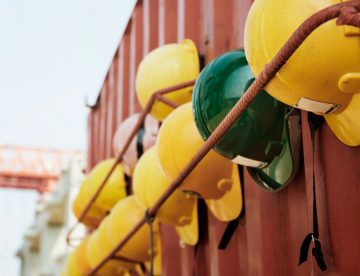
The roar and clatter of bulldozers and excavators have been a long-running soundtrack to construction sites across the world but it seems like something a bit quieter might be on the horizon here in the UK.
The UK government recently published a ‘call for evidence’ on decarbonising non-road mobile machinery (NRMM), which includes construction equipment, hinting at a potential shift away from the diesel-powered giants towards cleaner alternatives. Read this week’s blog to find out more.

This week, the Egyptian city of Sharm el-Sheikh saw world leaders, business leaders, climate activists, civil society representatives and others arrive for COP27 – the largest annual gathering on climate action. Running for two weeks (until 18th November), this United Nations conference is seeking renewed solidarity between countries to urgently tackle the global climate emergency and deliver on the Paris Agreement for people and the planet.
Approaches that can be made by energy intensive sectors such as oil, gas, steel and cement will be discussed on the conference’s ‘Decarbonisation Day’ (11th November) so we’ll be keeping a watch on what’s said. Meanwhile, we thought we’d take this as our theme for this week’s blog and look at five ways construction companies can lower their carbon footprint.

This week, the UN Climate Change Conference known as COP26 opened in Glasgow, bringing representatives from around 200 countries into the Scottish city.
With so much ground to cover, the conference is due to last two weeks, closing on 12th November. One pledge that’s already been made by leaders of more than 100 countries is a commitment to end deforestation by 2030. As the days progress, no doubt we’ll see more headline pledges like this but meanwhile, we thought it might be helpful to summarise what COP26 is all about and what it potentially means for construction. Read on for your five-point guide.

The UK, Welsh and Scottish governments have signed up to a legally-binding target to reduce greenhouse gas emissions to Net Zero by 2050. But to keep this target on track, the Construction Industry Training Board estimates that around 350,000 new construction jobs will need to be created by 2028, particularly outlining the need for green building specialists to reduce carbon emissions. This looks set to present both significant challenges and huge opportunities for construction companies. Read this week’s blog to find out more.

A year has now passed since the UK went into its first lockdown and, as well as this being such a tragic time for so many people, it’s also been a period when the government has poured an unprecedented £340bn into schemes intended to support companies and individuals through the crisis. Amidst all that COVID-related spending, it can be easy to forget that the country has several other priorities – not least of which is the urgency around climate change. Kicking off what is being dubbed the ‘green industrial revolution’, the government recently unveiled a £1bn funding pot for projects across England that will help to cut emissions from public buildings, schools and hospitals.
